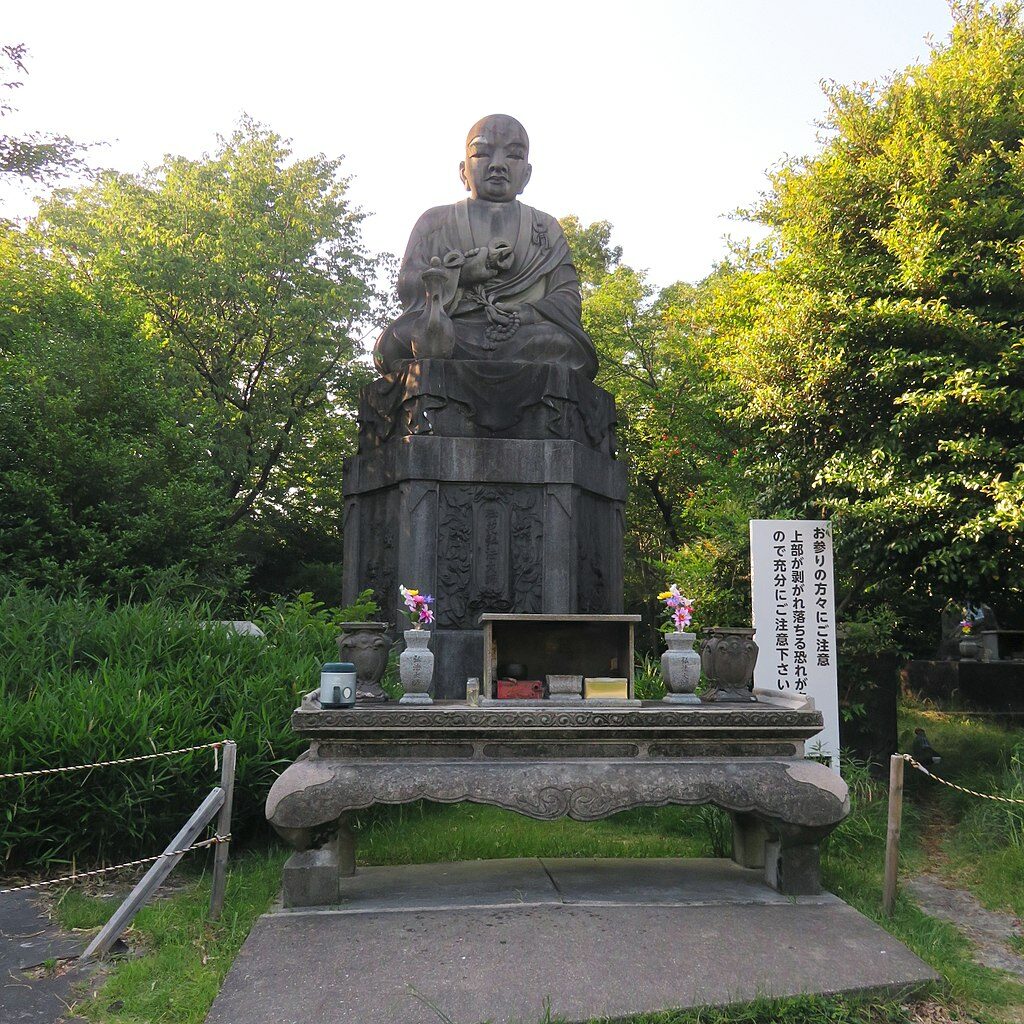
Because esoteric teachings were new to Japan, Kukai had to carefully explain how they differed from the exoteric teachings of the six Nara schools. The very first sentence of Kukai’s Difference between exoteric and esoteric (Benkenmitsu nikyoron) written in 814 or 815, encapsulates the three criteria for his distinction between exoteric and esoteric teachings:
“Whereas the Buddha has three bodies, there are two kinds of teachings. Those delivered by the celestial and historical embodiments are ‘exoteric’ teachings (kengyo). Being publicly expressed and abridged, those words are suited to the audience’s circumstances. The speeches of the cosmic embodiment (hosshin), on the other hand, are ‘esoteric’ teachings (mikkyo). Obscure and interior, those words are the authentic exposition.”
The “three bodies” are a reference to the trikaya doctrine that had been systematised in India by the Yogacara school around 300 CE. These three kayas, or bodies, are the Nirmanakaya (the physical manifestation of a Buddha, the historical Sakyamuni Buddha), the Sambhogakaya (the reward body of a bodhisattva who has become a Buddha, referred to as a Celestial Buddha – for instance, Amitabha/Amida or Manjusri) and the Dharmakaya (ultimate reality – in Shingon Mahavairocana/Dainichi, the Cosmos-as-Buddha expounding the truth).
In Kukai’s classification, the Sambhogakaya and the Nirmanakaya, as “celestial and historical embodiments,” belong to the category of “exoteric” teachings: they rely on skillful means in order to adapt the “words” used to the capacity and needs of the audience, and are not therefore the expression of ultimate truth. In contrast, the “esoteric” teachings of Dainichi Buddha, as the Dharmakaya, or cosmic embodiment of the Buddha, are “the authentic exposition.”
To sum up, following Kasulis’ presentation, Kukai sees three points of contrast between exoteric and esoteric teachings. In terms of the source of the teachings, the point has to do with the Buddha embodiment doing the teaching – the historical Sakyamuni Buddha or a Celestial Buddha, versus the Dharmakaya Buddha-as-Cosmos expounding the truth. In terms of the audience of the teachings, it is the contrast between a teaching using skillful means, and therefore “depending on what it does for the listener, not on the reality it designates,” and the direct preaching of the cosmic Buddha to the individual practitioner. In terms of the form of expression, John Krummel says that “for exoteric Buddhism, the absolute truth, i.e., the Dharma, transcends world and language, and thus cannot be explained. But for esoteric Buddhism, that Dharma itself is being perpetually expressed in and as its embodiment in the phenomenal world, in its sounds, movements, and forms, and even in the thoughts of sentient beings.”
Krummel goes on to explain that “Japanese commentators have often classified [Kukai’s] thought along the following lines: the theory of the six universal elements as providing a metaphysic, the theory of the four mandalas as providing an epistemology, and the theory of the three mysteries as providing a metapraxis.” Keen to keep his text accessible to a general public of potential practitioners, Kasulis focuses on the metapraxis contained in the Sanmitsu traditionally translated as the “Three Mysteries,” though Kasulis prefers to call them “the Three Intimacies,” of Mind, Speech and Body. He explains that mitsu means both “secret” and “intimate,” and argues that in Kukai’s doctrine, the three mitsu are “secret” only when approached from the outside, “with detachment.” Correctly practiced, they allow the practitioner to “achieve a profound, intimate, detailed engagement with the processes of reality.”
Krummel draws our attention to the Cosmos-as-Buddha within us being the origin of the three mitsu self-expressing through our mind, speech and body. “Since the cosmos is Dainichi’s body-and-mind, his deeds, words, and thoughts … form the configurations, resonances, and patterns of the universe, in these three media of “body, speech, and mind,” called the “three mysteries.” All visible and/or tangible forms and movements constitute the Buddha’s body and its movements, all sounds are his voice, and the mind’s comprehension of this principle is the manifestation of the Dharma in mandalic form expressing the Buddha’s state-of-mind. That is, all objects of the six senses make up the configurations, resonances, and patterns of the cosmos, the cosmic body-and-mind of the Buddha Dainichi, communicating the Dharma.… The three mysteries are in every single phenomenon, passing through all stages of being without discrimination, including stones, plants, trees, animals, humans, gods, demons, and places. Each of these serves as a “linguistic” medium that communicates Dainichi’s sermon in his omnipresencing, a sermon of the Dharma which cannot be expressed or described by means of the mundane human languages.”
Sources:
Yoshito S. Hakeda – Kukai: Major Works
Thomas P. Kasulis – Engaging Japanese Philosophy
John W. M. Krummel – Kukai entry in the Stanford Encyclopedia of Philosophy

